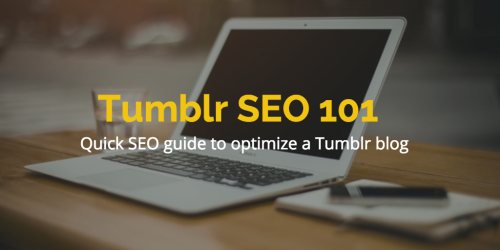I have been using Tumblr blogs for last five years to share photos, quotes, and links. I have been writing about Social Media and Technology News in my other blogs (in Google’s Blogger) in the Nepali language. And from the last couple of months, I was thinking to share my experience as an Inbound Marketer about Social Media, Search Engine Optimization (SEO), Analytics, Landing Pages and Conversion Rate Optimization (CRO).
It was quite challenging for me to choose the best platform for my new Inbound Marketing Blog, I have been juggling between Blogger, WordPress, and Tumblr. After playing with Blogger, Tumblr and WordPress for a few weeks finally, I decided to use Tumblr as a blogging platform, because it is super simple to use and have beautiful themes.
But being an SEO, choosing Tumblr as a blogging platform was a dumb idea because Tumblr does not have good SEO built-in, compared to WordPress and Blogger; and are losing the organic search traffic. I quickly realized Tumblr blog was poorly optimized though it provides sitemap and the robots.txt.
So, I took the challenge and tuned my existing Tumblr blog with on-page SEO pretty quick, and started seeing the bump in organic traffic. In this post, I will be sharing how you can do on-site SEO for Tumblr in a right way.

SEO Best Practices
You might have read a lot about SEO, and why SEO is already dead. With the rise of Social Media, we all believed “Write and people will come to read.” But that’s not true. The traditional way of doing an SEO might have dead, but the SEO fundamental rules have not changed much since the beginning. HubSpot says they increased their traffic by more than 50% using technical SEO updates.
Still, use of the target keyword in the “title tag” is the single most important on-site SEO factor. The highest level heading tag used on the page is the most important heading tag on a page, generally, it’s <h1> tag. Each page must have a unique title, descriptive URL, meta descriptions, alt & title tags for images and lot more for on-site optimization. Moz has an excellent SEO resource for the beginner. Let’s now move to Tumblr SEO.
SEO for Tumblr
Tumblr themes are beautiful. But they suck when it comes to SEO. Most of the themes, I have used does not even generate the unique title tag, and does not follow the order of highest level heading tag rules. So, for Tumblr SEO, you have to change/add a few lines of code to the theme. If you’re familiar with HTML/CSS, you can do it yourself, if not just ask your developer, and he/she will optimize it for you. Go to the Tumblr settings and edit your HTML/CSS theme from there.
Title Tag
If you’re optimizing your Tumblr blog for text posts instead of photos/links/quotes etc., make sure that the <title> tag contains the PostTitle;
<title>{block:PostTitle}{PostTitle} | {/block:PostTitle}{Title}</title>Meta Description
Add meta description block, if it’s not already there, we will create meta description dynamically from the post later.
{block:Description}<meta name="description" content="{MetaDescription}" />{/block:Description}HTML Body
On the blog homepage, the blog of your name is the most important factor there, and all the blog posts title becomes secondary. And in the blog post page, the title/heading of your blog post is the most important SEO factor. So, on the homepage (index page), we are going to use <h1> tag for your blog title whereas, for the blog post listing, we are going to use <h2> tag.
<div class="blog-title"> {block:IndexPage}<h1 class="blogtitle"><a class="default" href="/">{Title}</a></h1>{/block:IndexPage} {block:PermalinkPage}<h2 class="blogtitle"><a class="default" href="/">{Title}</a></h2>{/block:PermalinkPage} {block:IfShowDescription} <p class="blog-description">{Description}</p> {/block:IfShowDescription} </div>Similarly, on the blog post page, we will be using <h1> tag for the blog post title and <h2> tag for the blog title (index page title).
{block:Title} {block:IndexPage}<h2 class="posttitle"><a href="{Permalink}">{Title}</a></h2>{/block:IndexPage} {block:PermalinkPage}<h1 class="posttitle">{Title}</h1>{/block:PermalinkPage} {/block:Title}This above method is suitable for text posts on Tumblr. After replacing your existing block with the above code; you’re ready to rock the Tumblr SEO. One little thing, you might have to write a CSS for <h1> and <h2> tag.
If you have a photo blog, you can generate title from the PostSummary;
<title>{block:PostSummary}{PostSummary} | {/block:PostSummary}{Title}</title>Lastly, do not forget to submit your site to Google Webmaster tools. Tumblr creates sitemaps automatically, check your sitemap at yourname.tumblr.com/sitemap.xml (replace yourname) Submit it to Google Webmaster Tools.

